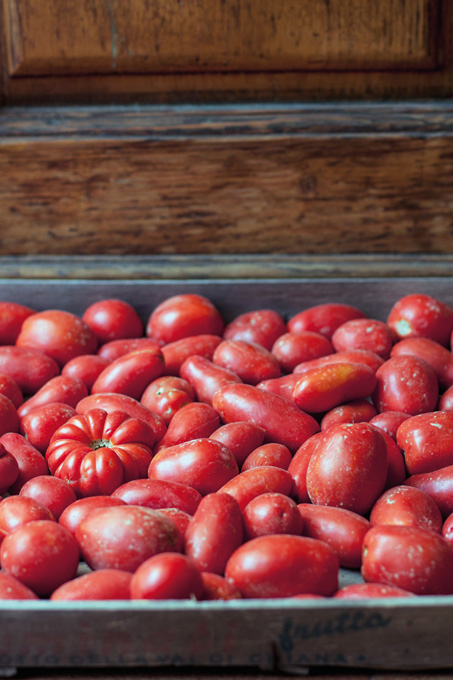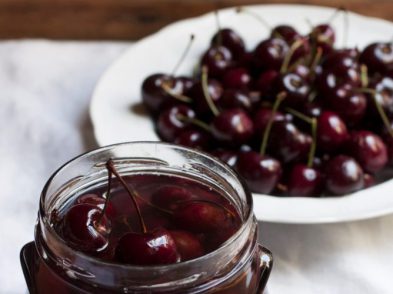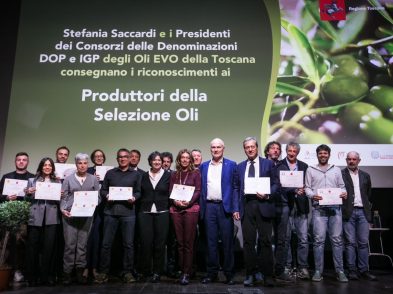Homemade bottled tomato sauce, that Italian tradition that encompasses everything we think of about Italian food: family, seasonality, self-sufficiency and copious amounts of pomodoro. It’s about preserving the glut of summer produce—tumbling, cheap, ripe, sweet tomatoes—for use throughout the rest of the year when traditionally they’re not in season.
More than a recipe, it’s a process often done ad occhio, by eye, where things aren’t measured out by scales but by how they look and taste. This “recipe” is the way Nonna Lina, my husband’s grandmother, who was from Fucecchio, would have made this pomarola. The method was recounted to me by my mother-in-law and her niece as if it were only yesterday that they were watching her make this from the sidelines. Tomatoes, onion, carrot for sweetness, celery, parsley, basil—a lot of it—and olive oil. Some water if the tomatoes aren’t juicy enough. She would break up the tomatoes in her hands as she put them in the pot.
Pomarola is a Tuscan tradition of tomatoes (a mixture of different varieties is best). Oblong San Marzano tomatoes and deep red, ribbed tomatoes such as Fiorentini or Cuore di Bue (Bull’s heart) are ideal—cooked with what Italians call aromi, aromas. Aromi can simply include basil, or it can mean that holy trinity of carrot, celery and onion. The resulting stew of sorts is passed through a passaverdura, or food mill or mouli, then bottled and stored away for those nights when all you have energy for is to boil some pasta and tip over some delicious, homemade tomato sauce.
Aside from a good quantity of very ripe summer tomatoes, you will need a passaverdura and—unless you plan on using all the sauce right away—some large jars with well-fitting lids that have been sterilised by boiling in water 10 times and leaving to air dry completely. I don’t know how this could be done without the help of a passaverdura. A blender will not do. Passing 4 kilos of tomatoes through a sieve will certainly build character (and muscles) but I don’t think anyone will be pleased about having to do it. A food mill is a must in an Italian kitchen. It’s not a fancy contraption but rather old fashioned and at times awkward. But it manages to separate unwanted fibres, seeds and chunky bits, while at the same time turning the vegetables into a silky, smooth sauce. Once you have one, you’ll use it for everything from jam and sauce to soup.

Pomarola
(Fresh Tuscan tomato sauce)
Makes about 2.5-3 kilos of sauce
4 kilos of fresh, ripe tomatoes
1 large red onion, roughly chopped
1 large carrot, roughly chopped
2 celery stalks with leaves, roughly chopped
½ bunch of flat leaf parsley
½ bunch of fresh basil leaves
olive oil
1 cup water or more
salt
Method
Wash the tomatoes well and begin ripping or roughly chopping them up and putting them directly into a very large stock pot (or two medium-large ones). Add the chopped onion, carrot, celery and herbs and heat the pots over low-medium heat initially. As the pots warm, the tomatoes will begin to let out their juices. Season generously with salt. You may want to help them along by adding some water, up to 250 ml.
Let the vegetables cook down, stir occasionally to evenly distribute. As soon as the vegetables are covered by liquid, turn the heat to low and let it simmer, uncovered, for about 40 minutes to 1 hour.
Taste the tomatoes and adjust with salt and pepper if needed. If too acidic, Nonna Lina would have added a pinch of sugar too. Remove from the heat and begin the food mill process—scoop out the vegetables bit by bit and pass them through a food mill set over a large pot (or a bowl, but I find the mill is more likely to sit over a large pot—it has little legs that lift out for this). Every now and then, when you have exhausted the leftover scraps in the food mill, tip these unwanted bits into the compost or bin, and carry on. If you want to use the sauce right away, you can store it in the fridge at this point and use over the next few days.
Otherwise, when the sauce is completely smooth, bring it back to a rolling heat, then distribute the piping hot sauce amongst the jars. Pour a layer of olive oil over the top of the sauce before closing the lid tightly and leave on your kitchen bench until the sauce has cooled and you hear that “pop” of the lid sealing. Store in a cool, dry place.
To serve, Nonna Lina would toss this pomarola through pasta with a knob of butter.

This is an edited extract from Florentine: The True Cuisine of Florence by Emiko Davies, published by Hardie Grant Books. Order your copy of Florentine: The True Cuisine of Florence here.








